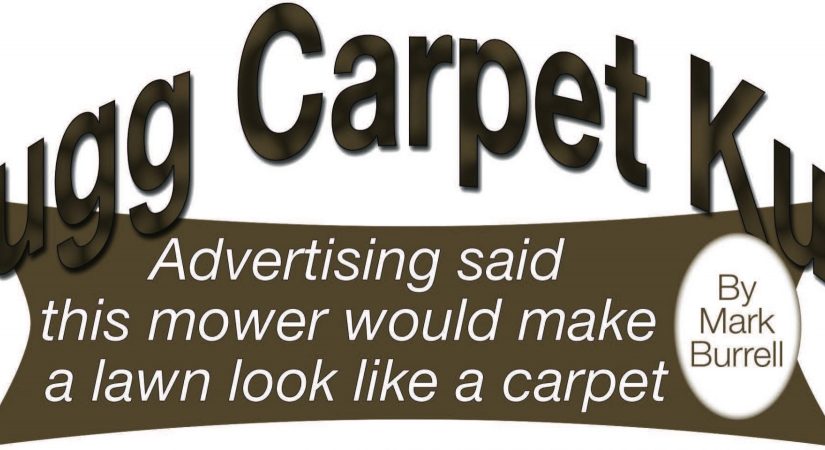Advertising said
this mower would make
a lawn look like a carpet
While picking up a transmission for my 1956 Studebaker pickup at my favorite transmission shop, Booker’s in Enid, Oklahoma, I noticed an old lawn tractor mower along the wall. This was not like most old lawn tractors you see in shops, with an inch of dust on them and four rotten flat tires. Not shiny and perfect like an unused show tractor, but clean and green like it was used yesterday. It looked like it was used yesterday because—it was used yesterday. After discussing with the owner, Kevin, I realized that CFT readers would enjoy the history and story of this riding mower.
Like most shops in an industrial complex, there is mostly concrete parking areas and a small amount of grass in the front and back. Not enough to justify a high dollar lawn tractor, but just a little more than you would want to mow with a push mower. Kevin does have an old push mower of the same vintage that he uses for a small amount of grass in front of the shop that is not accessible with the tractor.
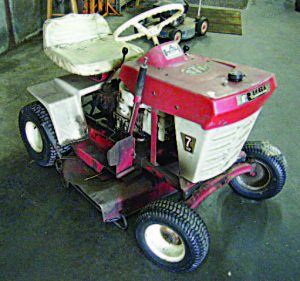
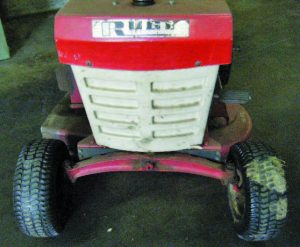
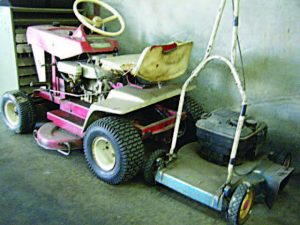
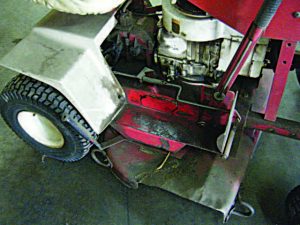
In the early 1960s, Kevin was wanting some spending money, so his father bought this tractor and push mower and put him to work mowing the family lawn and any neighbor lawns he could find. Keep our lawn looking good, his father said, and you can keep the profit from any other lawns you can mow.
At that time, Kevin charged $3 per lawn and the gas for one lawn cost him 20 cents so to a young kid, this was a real money maker. Like all other good deals, it included the small print items, such as payment for gas, oil, repairs, wear on items and a “return on father investment” fee for each completed job.The little Rugg Carpet Kutt tractor was worn out, rebuilt and reused in the old days and is still in use today. Its compact size takes up very little room in the shop, makes quick work of a small lawn, reminds the owner of the good old days and just looks darn good while in operation.
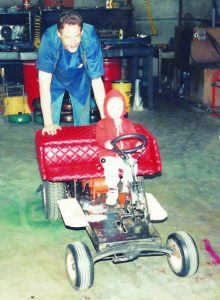
The owner is taller than most of us, so he almost looks like a clown while mowing, with his knees way up above the steering wheel. Over the years, he has added some modifications to make it user-friendly for a tall person, such as a foot peg near the air cleaner on the left side and an extension to the dead man’s pedal on the right side to keep his foot from slipping off.
There aren’t any parts available for this old machine anymore, so the owner has to custom-fit parts from later machines to keep it going. Luckily, he parted out a couple of these tractors in the old days and has his own supply of unobtainable parts in the attic. Even common parts, like bearings, take some engineering effort to make fit in their original locations.
The Rugg company advertised that their lawn tractor would make your lawn look like a carpet—thus the model name, Carpet Cut mower.
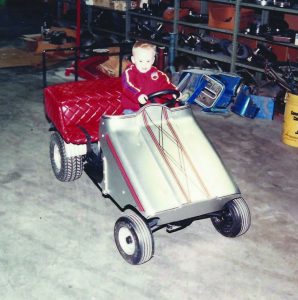
The Rugg was one of many dedicated ride-on tractor manufacturers that sprang up to fill the consumers’ desire to ride instead of pushing a mower around their yard. Before this class of tractors, lawn mowers were just an attachment for walking behind garden tractors that resembled a one-horse rig, but with a gas engine hanging out in front instead of a real horse made of flesh.
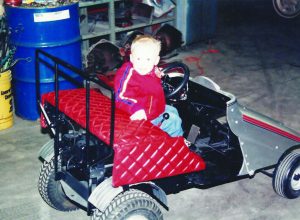
The E.T. Rugg Company started in the 1890s in Newark, Ohio, building horse and cattle halters. In the 1930s, Rugg built hand mowers, in the late ’40s powered reel mowers and started building the Roto Rugg rotary 18 inch push mowers in 1950. Riding mowers came along in the late 1950s. Rugg built branded mowers for many chain store customers such as JC Penney, WT Grants, Montgomery Ward, Western Auto, Lowes and many others. In 1971 and 1972, they built a special Richard Petty number 43 blue riding mower edition for Lowes, since Lowes was a Petty racing sponsor for those two years. At its peak production in the early 1970s, the plant built 175,000 mowers per year with more than 300 employees.
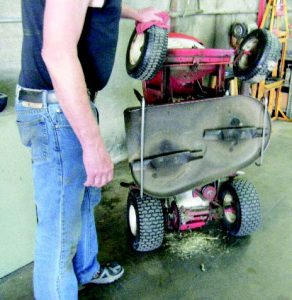
The Newark plant closed in 1973 when the company merged with other manufacturers.
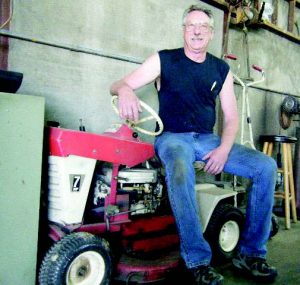
In the 1980s, the owner took a similar Rugg lawn tractor and made a go cart for his son. Commercial go carts seemed too expensive, so Kevin decided to build one from a Rugg mower since he was familiar with the workings of this brand and liked the reliability of the parts it was built from.
After laying out some chalk lines on the shop floor, he reconfigured the seat, steering, throttle and brake controls, and turned his son loose for a test drive. Initial testing and a few crashes later, everything seemed to work well, so Kevin went to work forming a custom body that a three-year-old would be proud of. No fiberglass on this machine, it was all built from metal to mimic race cars from that era. The Rugg-powered rig was enjoyed for years until he became interested in real cars and then it was sold at a garage sale for another child to enjoy. Luckily for us, these pictures preserve the story and history of the Rugg Carpet cut mower that will cut a rug or mow your carpet. While some readers may be disappointed that this article is not an in-depth article about the latest rug-cutting country swing dance moves, the rest of us appreciate the simplicity of the first generation of ride-on mowers.


